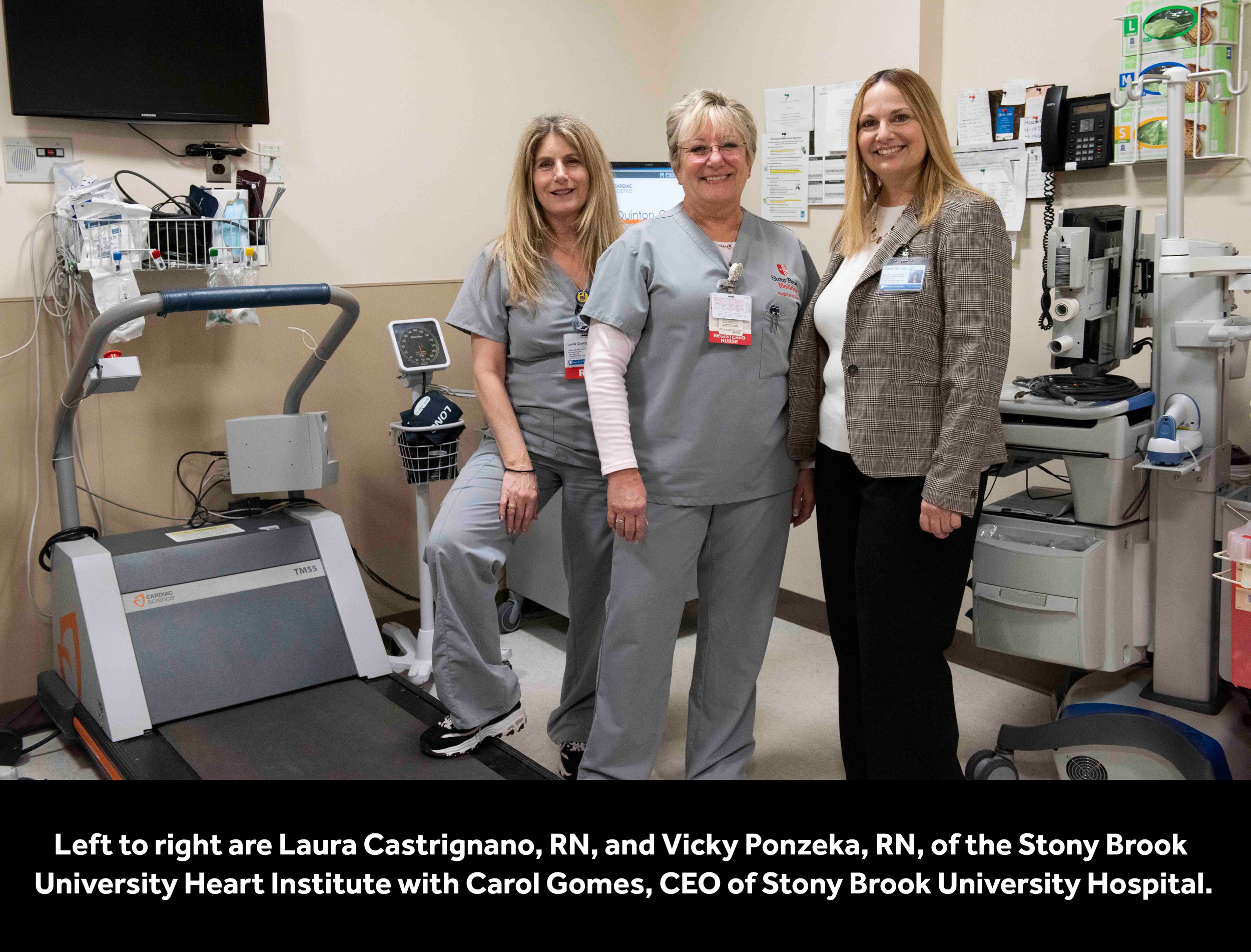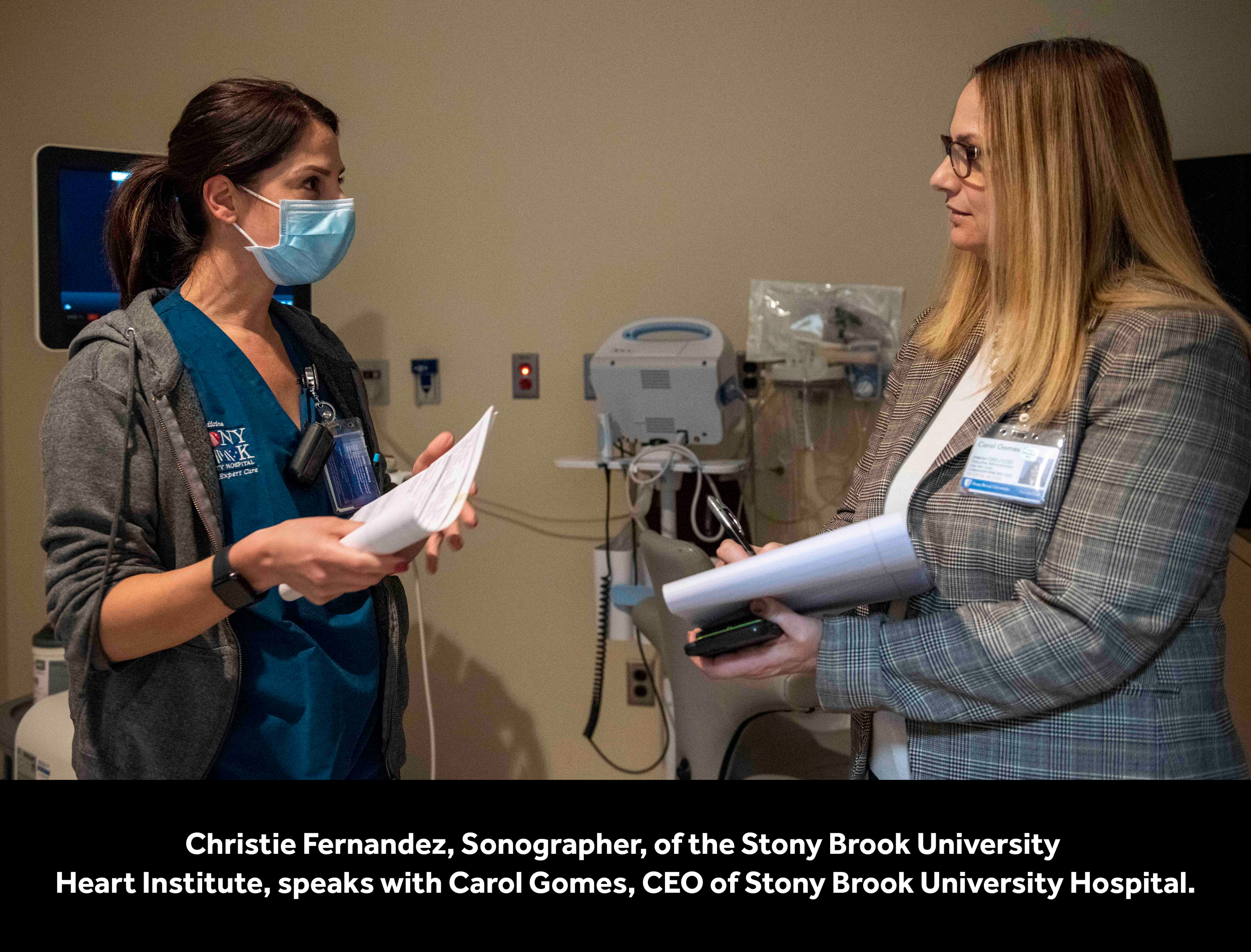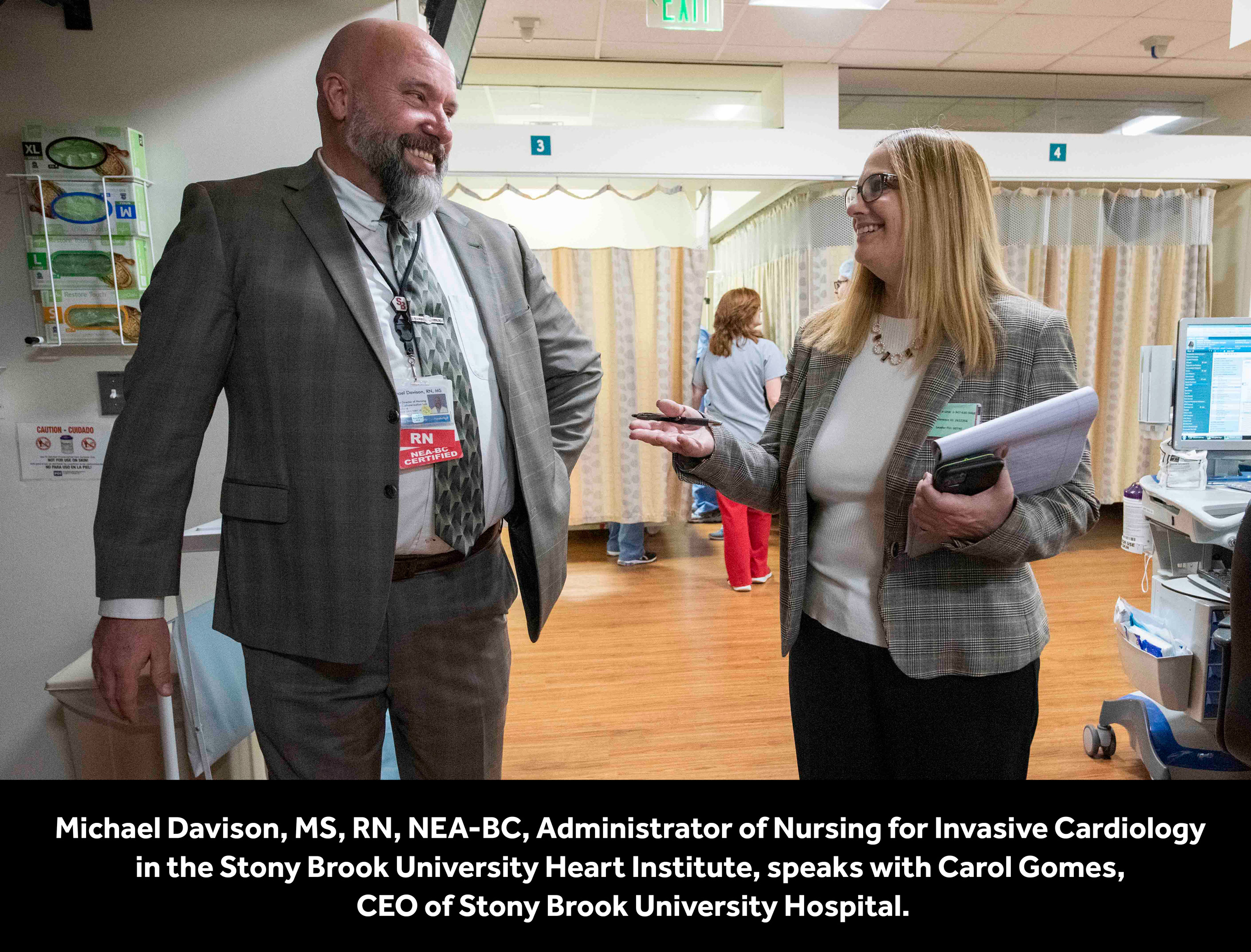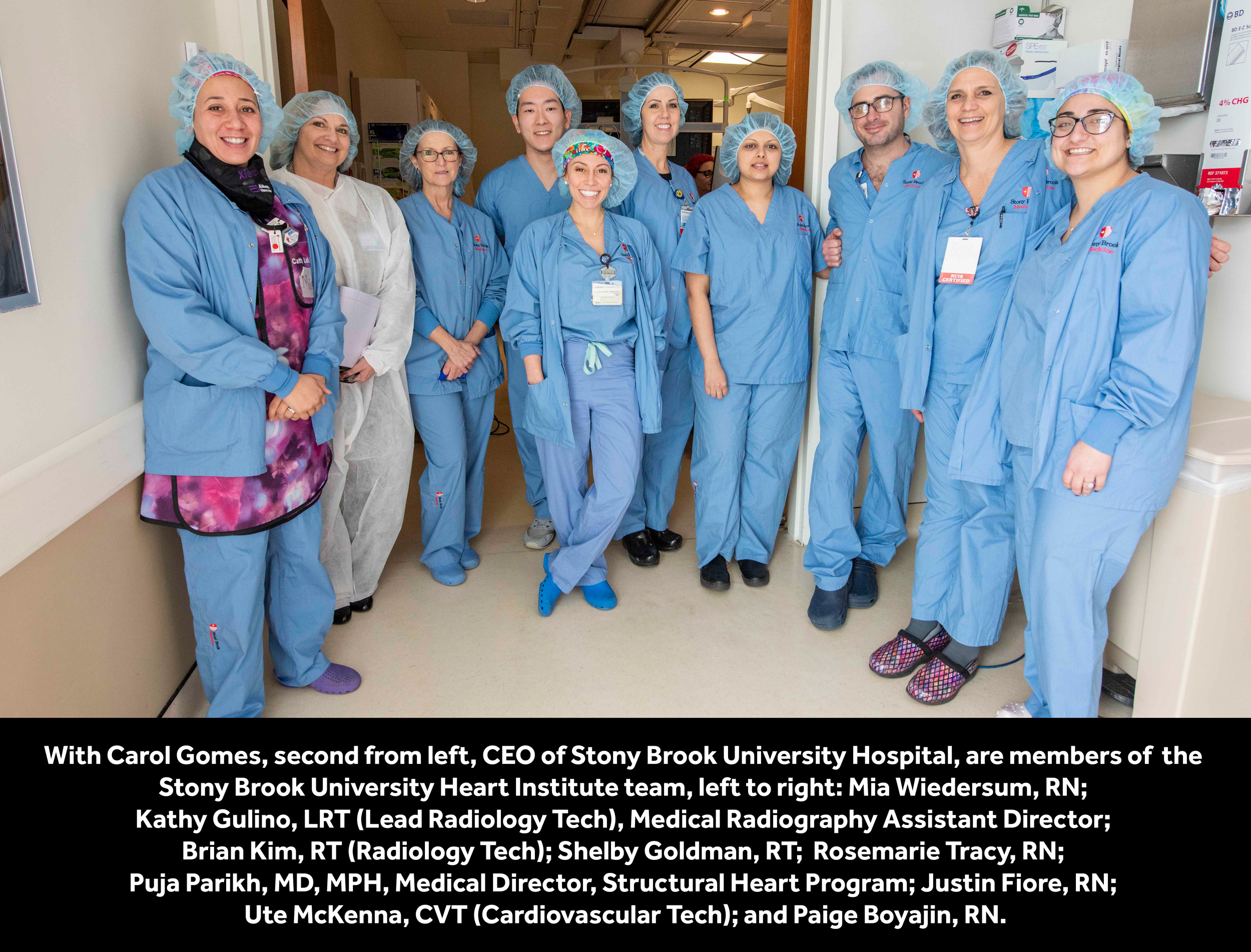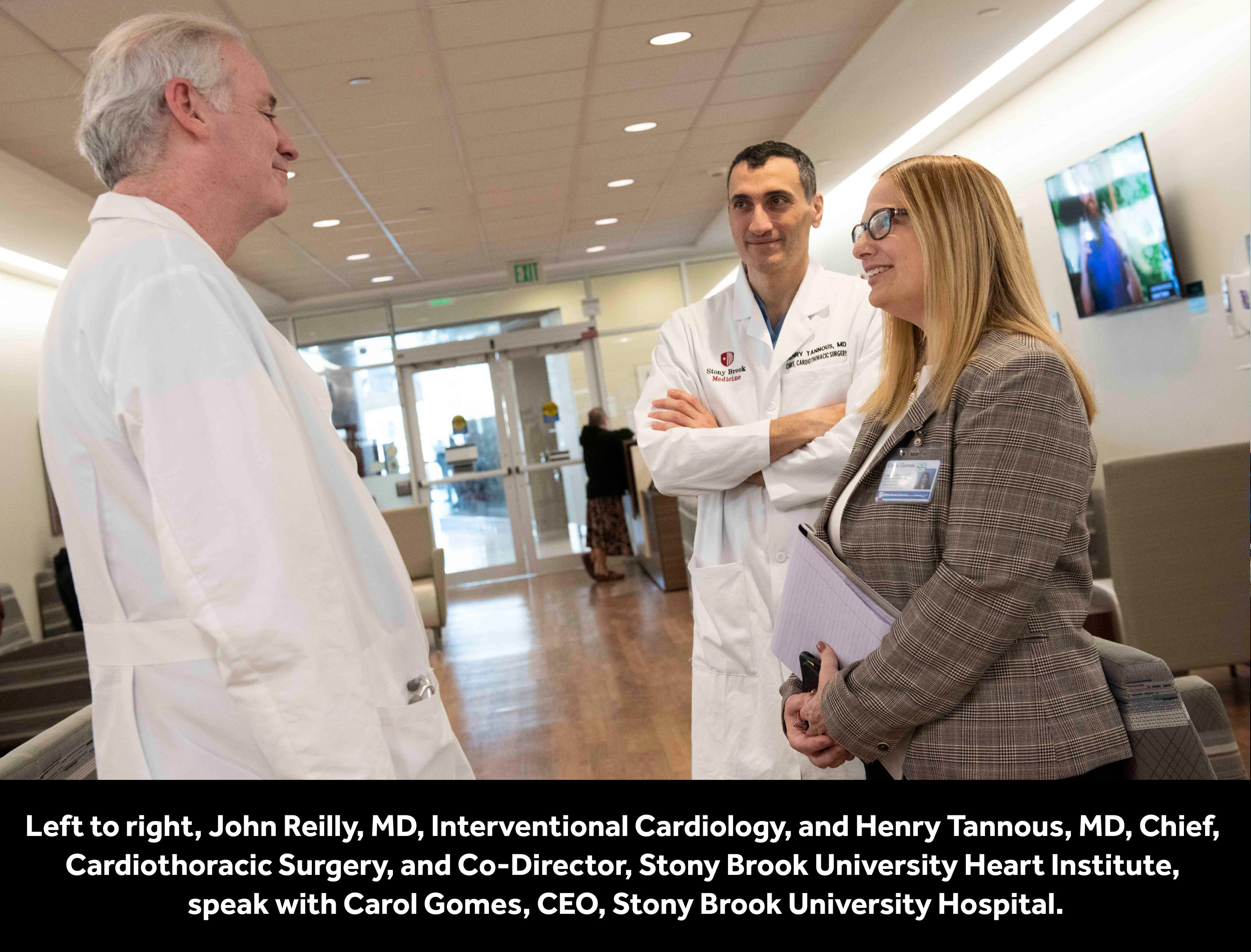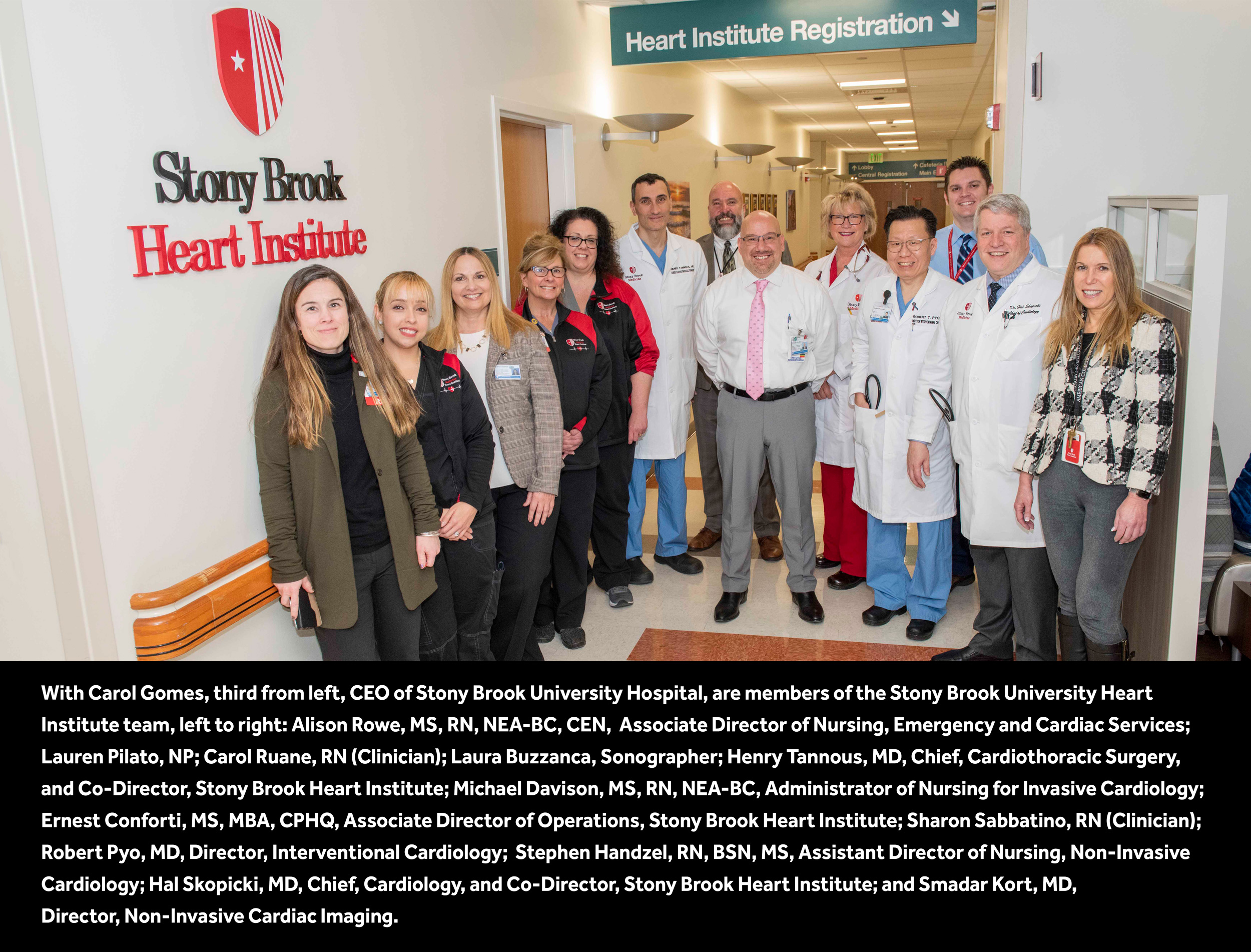Beginning the tour in the Heart Institute, I was greeted by Stephen Handzel, RN, Assistant Director of Nursing, Non-Invasive Cardiology, and Smadar Kort, MD, FACC, FASE, Director, Noninvasive Cardiology, Cardiovascular Imaging and Echocardiography, and Director, Valve Center.
As we walked through the newly renovated Heart Institute lobby and waiting area, Stephen explained how the non-invasive cardiology clinical team manages, diagnoses and treats patients with advanced and unstable heart disease and provides expert care both on an inpatient and outpatient basis. Services include a non-invasive Echocardiography Laboratory, providing comprehensive state-of-the-art diagnostic evaluation using Transthoracic and TransEsophageal Echocardiograms (TEE), as well as stress echocardiograms.
Stephen explained that the lab performs two to three outpatient TEEs a day, while the inpatient volume varies depending on the needs of the unit. Within the past year, the hospital volume for all cardiology imaging studies was 16,265 and the combined hospital and off-sites volume was 20,089.
As we entered the stress testing lab, I was greeted by nurses Vickie Ponzeka and Laura Castrignano. They walked me through a typical day in the lab, where various types of stress testing, from exercise treadmills to nuclear pharmacological testing and stress echocardiograms, are conducted.
They explained that patients who are scheduled for stress testing often arrive in an anxious state, not knowing what to expect. Vickie said she usually infuses humor into the conversation to set patients at ease. Before beginning any procedure, a full explanation of the process is provided to patients, which helps to reduce their anxiety. Laura said she is especially grateful to be working with a wonderful team, in which comradery and flexibility make the workday enjoyable. She also enjoys using the opportunity to think on her feet and problem solve.
We then proceeded to a sonogram room to meet Christie Fernandez, who works as a sonographer in the Heart Institute. Christie explained that cardiac sonographers are specially trained to use imaging technology to help physicians diagnose heart disease. They operate ultrasound equipment that provides moving 2-D or 3-D images of the heart and its chambers.
Dr. Kort noted that SBUH is a teaching site providing clinical rotations for three sonography schools, which offers a great opportunity to recruit new staff. In fact, Christie was a former student who was recruited to join the SBUH team. She said she decided to work here because SBUH has a great reputation, because it is always growing, which provides an opportunity for continuous learning, and because there is support from her co-workers.
Stephen said the sonographers are the “heart and soul of the cardiology service because their work really changes and improves patient care.” The service started with two sonographers and has expanded to four, half of whom spend most of their time on hospital units at the bedside.
Christie noted that the work can be very physical, as they often have to transport and set up the portable machines to conduct bedside studies. These studies are sent directly to the Radiology reading room to facilitate immediate reads and hasten diagnosis and treatment. Continuing the Heart Institute tour, we entered the Cardiac Catheterization and Electrophysiology suite, where I was greeted by Michael Davison, RN, Administrator of Nursing for Invasive Cardiology. The suite includes five self-contained, state-of-the-art Siemens equipment including three cardiac catheterization laboratories and two electrophysiology laboratories.
Construction of an additional lab (Cardiac Catheterization/Electrophysiology) began in January 2020. The first three-month phase will be the enabling phase, which involves decanting and relocating ancillary rooms in order to free up the space for the new lab construction. The project, including the enabling phase and the build of the lab, is scheduled to be completed in September.
Before entering the suite, which is a sterile environment, we donned a “bunny suit,” which is protective material to prevent dust, human skin and hair particles from entering the suite’s atmosphere. While touring the suite, the staff shared information about the equipment used to perform cardiac ablations, a procedure in which an electrophysiologist will scar or destroy tissue in the heart that is allowing incorrect electrical signals to cause an abnormal heart rhythm, using an intraoperative imaging and mapping system.
Dr. Kort noted that while the Heart Institute clinical staff offers the latest advances in medicine, its physician scientists are also actively enhancing knowledge of the heart and blood vessels through basic biomedical studies and clinical research. Michael shared that the Cardiac Cath staff is a close-knit team and enjoys working together. With limited turnover on the unit, many of the nurses spend their entire careers in the cath lab at SBUH.
Under the focused and dedicated leadership of the Heart Institute, which includes Dr. Henry Tannous, Dr. Hal Skopicki, Ernest Conforti and Alison Rowe, I have no doubt that the Heart Institute will continue to flourish. It was a pleasure to visit with the Heart Institute team, which includes board-certified cardiologists and cardiothoracic surgeons, as well as specially trained anesthesiologists, nurses, physician assistants, nurse practitioners and perfusionists who work very closely with ancillary staff and other support staff. Together, they combine their expertise and work seamlessly to create excellent outcomes for our patients.
Happy Heart Month to all!
Carol


